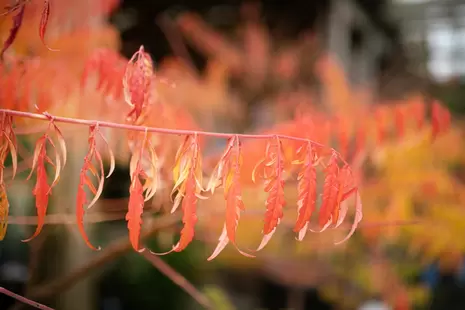Planting Trees & Shrubs
GARDENWORKS recommends this strategy for ensuring stronger, healthier and longer living trees and shrubs. Proper planting reduces the stress of transplanting and is vital for the overall well being of plants. You want to get your new plants the best start possible.
- Plant trees and shrubs where they will have enough room for their natural branching habit. Read the labels for information on mature shape, height, and spread. Be aware of overhead power lines, overhangs on roofs etc. You should know the location of sewer lines, electrical lines, weeping tiles and other underground utilities and avoid planting large trees above them.
- For each plant, dig a hole twice as wide of the diameter of the root ball but only as deep as the ball's height and place the soil off to the side. This prevents the root ball from settling and sinking. Ensure the sides of the hole are rough and scarred (heavy clay soils tend to have a shiny texture and this needs to be scarred). Mix the existing soil from the hole with good quality top soil at a 70:30 ratio (70% native soil and 30% new soil).
- It is now time to plant the tree or shrub.
- For plastic pots, carefully remove the moistened root ball from the pot. If the roots are tightly wound up (these tend to be dark in colour), loosen the roots slightly using your hands or a dull knife.
- For balled and burlapped, place the plant in the hole so it is sitting at the same level as it was originally planted. Gently cut away as much of the twine as possible. Remove as much of the burlap as possible without disturbing the root ball. If the root ball feels loose, leave the burlap on. The remaining burlap will eventually rot away.
- For fibre pots, we recommend you leave the plant in the pot. Soften the fibre pot with water and let it sit for an hour or so. Cut off the ‘lip’ of the pot so it is level with the soil in the pot. Using a sharp knife, cut at least 5 slits from the bottom of the pot to the top, making sure the cut goes through the pot, then place it in the hole. If the plant is well-rooted, the soil and roots pull out easily and intact, you can remove it from the pot if you feel comfortable, just follow the instructions as though it were a plastic pot.
- Once the plant is in the hole, lightly pack the soil mix of new and existing soil around the roots so the soil level is the same as the top of the root ball. Do not pack the soil down with your feet. Instead water well to remove the air pockets in the soil. Build a small berm around the drip line of the tree or shrub, this allows the water to stop and soak into the soil, going directly down to the roots.
- Water the new plants slowly and thoroughly using a water soluble transplant fertilizer, such as GARDENWORKS Transplanting Fertilizer 5-15-5. This encourages root growth and reduces the stress of transplanting. The fertilizer should be applied at least three times in the first growing season, at least a month apart. If you are planting during the dormant season (fall through late winter), it is a good idea to use GARDENWORKS Bone Meal 2-14-0, instead of liquid transplant fertilizer. Apply one handful of bone meal per foot of height of the tree or shrub, and apply directly around the root ball as you fill the soil mix into the hole.
- In general new trees should not be staked. They need to be free to rock slightly in the wind, which encourages the growth of anchoring roots. Stakes act as a form of crutch which the tree can become reliant on for stability. The exception is if you are planting a tree in an extremely windy site where the gentle rocking of the wind soon turns to pushing the tree right out of the ground. Staking in that case should be done and the stake should be placed at least 46cm (18”) away from the trunk in the undisturbed soil. Attach the stake to the tree using heavy twine or wire. The area of the wire that is touching the tree should be covered with a section of hosing to prevent any damage to the bark. Remove the stake after one full growing season.

